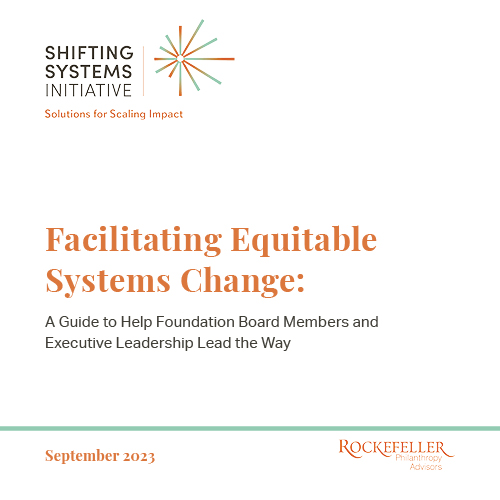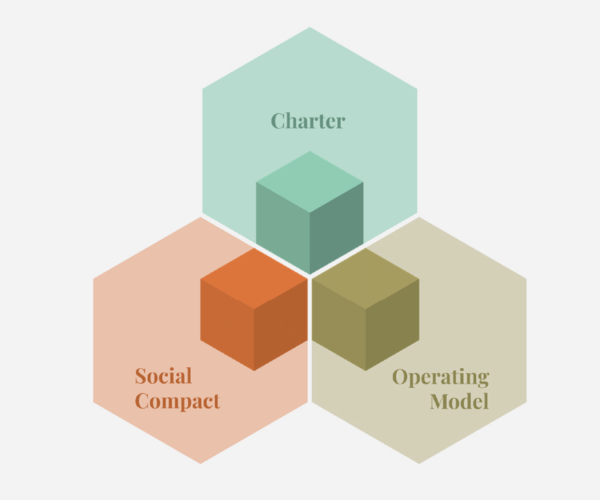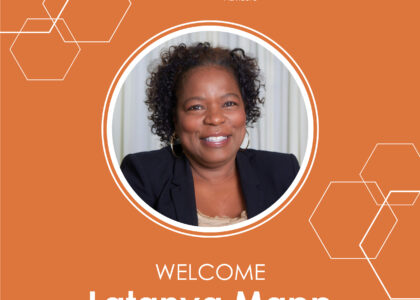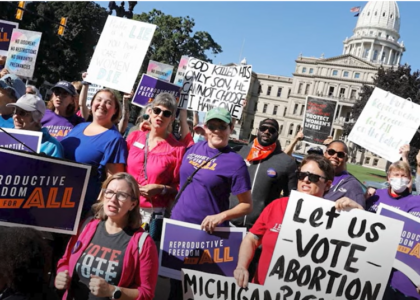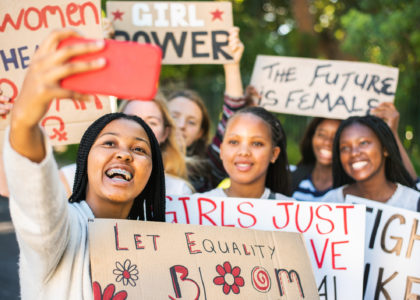What’s Top of Mind for Philanthropy Leaders
November 14, 2023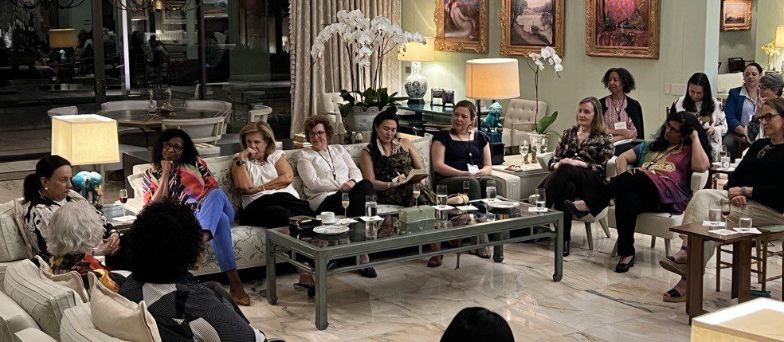
Summary of the 2023 Summit for Women Leaders in Philanthropy at Sunnylands
(Click here for full report.)
In Spring 2023, a gathering hosted by the Annenberg Foundation Trust at Sunnylands in Rancho Mirage, California, brought together 22 remarkable women leaders in philanthropy. They were united by a shared purpose: to forge an empowering community of women chief executives to exchange and cross-pollinate ideas, share experiences, and explore collaborative opportunities.
Curated to ensure a rich tapestry of organizational types, issue areas, and personal backgrounds, the event was conceived and planned by steering committee members Melissa Berman, CEO of Rockefeller Philanthropy Advisors; Diane Kaplan, then CEO of Rasmuson Foundation; Judy Belk, then CEO of the California Wellness Foundation; and Cinny Kennard, Executive Director of the Annenberg Foundation, along with the program team that included Susan Feeney of GMMB, Director Jim Ferris and Associate Professor Alexandra Gaddy-Reed of the USC Center for Philanthropy & Public Policy, and Renee Karibi-Whyte of Rockefeller Philanthropy Advisors.
Attendees hailed from states across the United States, from Maryland to California on the east-west axis, and from Alaska to Texas on the north-south. The represented organizations included community foundations, LLCs, family offices, family foundations, and independent philanthropies. Some were place-based, some national, and others had an international footprint. The focus of these organizations spanned areas such as health, education, climate, systems change, race and equity, economic opportunity, youth, immigration, democracy, and many others.
Notably, the group featured a balance between experienced leaders, with four individuals having recently retired or announced their retirement, and emerging leaders, and a similar number had less than two years of experience at the helm of their current organizations. Emphasizing the importance of diversity, invitations prioritized a variety of ethnicities and experiences in order to foster a truly inclusive and representative gathering.
With all these differences, the women leaders shared a common drive for continuous learning, a commitment to improving society, and exceptional leadership qualities. The candid and insightful discussions surfaced several prominent themes, reflecting the insights, vision, and passion of women philanthropy leaders in today’s fast-changing and complex environment.
Impact Investing: A Transformative Path to Change
One of the topics that most energized the group revolved around impact investing—an approach that aligns financial investments with social and environmental goals. As a whole, they recognized the transformative potential of directing investments toward projects and initiatives that tackle the root causes of social problems. Some had direct experience with it, while others were at the beginning of a learning journey. Many expressed a desire to set a goal of elevating impact investing to a central component of their investment strategy as a way of magnifying impact by going beyond grants.
The conversation revealed the importance of this topic to the current philanthropic landscape. Some of the leaders challenged the conventional notion that prioritizing financial returns was at odds with investments aligned with social and environmental well-being. Many advocated an expanded view of returns, encompassing economic gains and positive societal contributions. Incorporating a long-term perspective and considering the broader implications of investment decisions was offered as one path toward harmonizing financial returns for profit with measurable social and environmental outcomes. A number noted the need for education and awareness among investment professionals regarding social justice goals.
Other leaders noted the importance of diversifying investment teams through both ethnicity and gender lenses as a means of driving more inclusive investment strategies. This information, however, was hard to find, with very few complete data sources available, and there was a desire for accurate and transparent data on the makeup of investment teams. Several leaders shared examples of the barriers they faced in obtaining buy-in from boards and investment teams regarding potential shifts in financial advisors to promote inclusivity and diversity in their ranks.
In essence, the discourse surrounding impact investing illuminated its pivotal role in the evolving philanthropic landscape, propelling leaders to challenge conventional wisdom, advocate for holistic returns, and strive for inclusive investment strategies that bridge the gap between profit and societal betterment.
Policy Change and Advocacy to Fuel Systemic Impact
The power of policy change and advocacy in driving systemic impact was another topic that loomed large during this convening. One of the session facilitators emphasized that policy infrastructure was essential in effecting long-term change and that advocacy efforts should be built on a strong foundation of evidence-based policy research. In response, a few participants shared their experiences of establishing networks of policy advocates at both state and federal levels, facilitating engagement with policymakers and providing a platform for influencing policy decisions.
Other leaders noted that they leveraged unusual allies, stressing the importance of engaging with organizations across the political spectrum. They found that it can be helpful to build consensus by partnering with diverse stakeholders—including those with which they may have some fundamental disagreements—to work from the middle out.
The significance of grassroots advocates in driving policy agendas was also emphasized, with some participants acknowledging the challenge of navigating the different timelines between grassroots advocates and the slower pace of policy change. Striking the right balance, has been critical for them in ensuring that policy efforts had the desired impact. Two participants shared their experiences of effectively partnering with government bodies as well. In Alaska, for instance, philanthropic organizations collaborated with government agencies by leveraging co-funding arrangements to advocate for change. Understanding and utilizing specific clauses and rules allowed them to engage in advocacy work directly alongside government officials.
Funding organizing work emerged as another crucial aspect of advocacy strategies. Participants recognized the importance of empowering grassroots groups through funding and organizing efforts, effectively challenging powerful interests, and achieving policy changes that benefit the communities they serve. This recognition fueled a commitment by some to engage in policy change from within the system, leaning on both grassroots advocates and change agents within the public sector.
Other participants noted that philanthropy tends to be risk averse and encouraged the sector to be much more courageous and strategic in advocacy work. Those participants highlighted the need to take calculated risks, explore new avenues, and step out of the typical funding comfort zone.
Community and Collaboration: Building Bridges for Impact
Collaboration was a recurring theme in the discussions, reflecting a vision of philanthropy as a collective endeavor; a “collaborative quilt” where each piece contributes to the strength of the whole. Many of the leaders noted that they proactively seek out diverse perspectives in all aspects of their work to build on the power of different experiences and viewpoints to enrich decision-making processes. By ensuring that the voices “in the room” are diverse and representative of the communities they serve, these leaders created space for innovation, creativity, and effective problem-solving. They suggested that the best decisions and strategies emerge when all individuals feel heard, valued, and included.
Emphasizing internal collaboration, one leader noted the importance of creating an inclusive and supportive work environment where teams can connect, and share insights and resources. She specifically cited daily stand-ups and regular convenings as effective tools for fostering engagement, focus, and collaboration among team members.
Championing Equity and Diversity
Equity and diversity were paramount topics on the minds of leaders during the summit, with the need to address systemic issues and dismantle inequity as core to their philanthropic work. It was noted that promoting equity and diversity is not only a moral imperative, but also crucial for achieving meaningful and sustainable positive change in their communities. Most participants committed to fostering inclusive practices both within their organizations and in their grantmaking strategies. They acknowledged the need to ensure that everyone, regardless of their background or identity, has equal opportunities and access to resources.
The women passionately dissected the gendered expectations imposed on women leaders in the philanthropy sector, advocating for change and balance. They spoke with passion, frustration and humor about the challenges of navigating these expectations and striking a balance between humility and assertiveness. Given the consensus that gender biases hinder effective leadership, these leaders noted the need for continued work to break down barriers that limit women’s advancement and influence in philanthropy.
Investing in Change
Based on the discussions, embracing innovation is viewed as crucial for driving progress and achieving lasting impact in philanthropy. Many leaders shared examples of how the pandemic had disrupted established philanthropic models, prompting organizations to swiftly adapt their processes to better support grantees and communities in need. Courageous, strategic, and disruptive leadership that challenges conventional wisdom, several held, is needed to forge new paths to address complex social issues. It was noted that this leadership should include elements of relinquishing control to actively listen to the needs of grantees and communities.
The Group’s Vision
As the philanthropic landscape evolves, the sector’s women leaders are increasingly at the forefront, setting new standards for impact and social justice via bold actions. With a vision of a more equitable world, they are inspiring change and redefining the meaning of effective philanthropy. Their passion, purpose, and commitment to transformative action leads them to champion inclusive practices, dismantle systemic biases, and empower underrepresented voices to ensure a fair and just society.
To date—several months post-convening—the women who gathered at Sunnylands already have shown the depth of their connection through ongoing group communications, participation in each other’s retreats, dinners, requests for sample policies, procedures and approaches, and shared encouragement and accolades. As a group, they held a virtual learning session with invited experts on mission-related investing.
The group seeks to build on its connection and learnings with additional convenings and by proactively welcoming more women leaders into this community. The promise and potential of this initiative is that it will create a peer support network for women leaders on their journey to greater impact. One aim is to mentor the next generation of leaders, and another is to present additional opportunities for collaboration, peer learning, empowerment, and accountability that will advance leadership for the field overall. Expanding the circle while preserving the intimacy required to build meaningful relationships and hold candid conversations will be a focus of this initiative. The next step is determining how this movement of leaders can be nurtured and sustained, and in so doing, build the next generation of philanthropy leadership. With each new cohort, the broader network of women philanthropy leaders will expand, enriching the collective wisdom, and further accelerating impactful change on a global scale.
We are extremely grateful for the participants, as well as to those organizations and individuals who funded and supported the gathering in ways large and small. This impactful event could not have happened without their engagement.
To read the full 19-page conference report, click here.
Back to News
